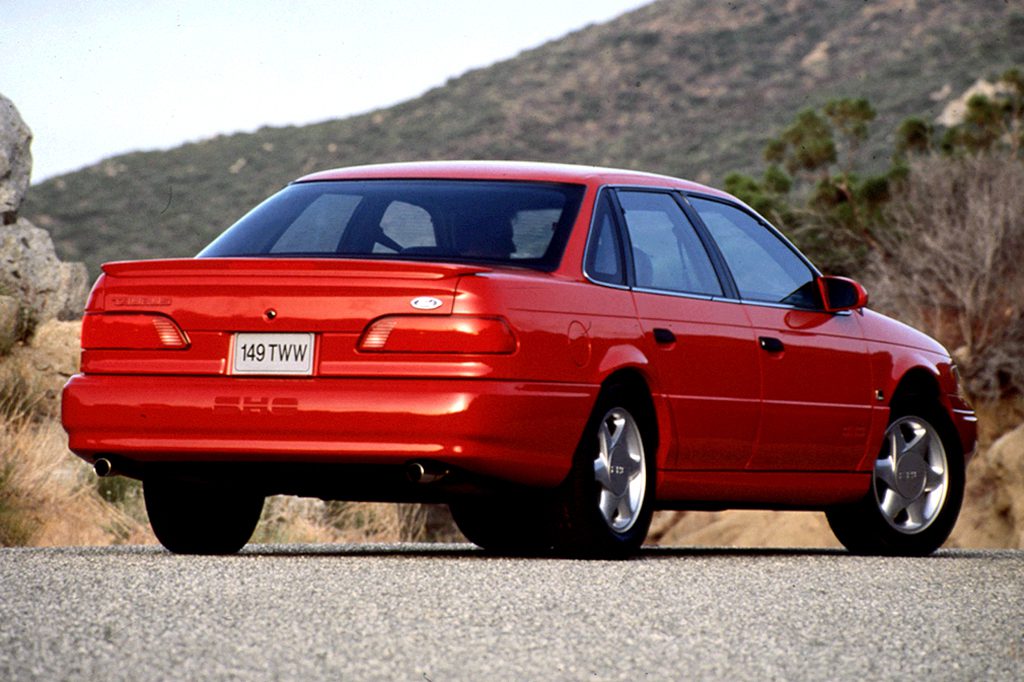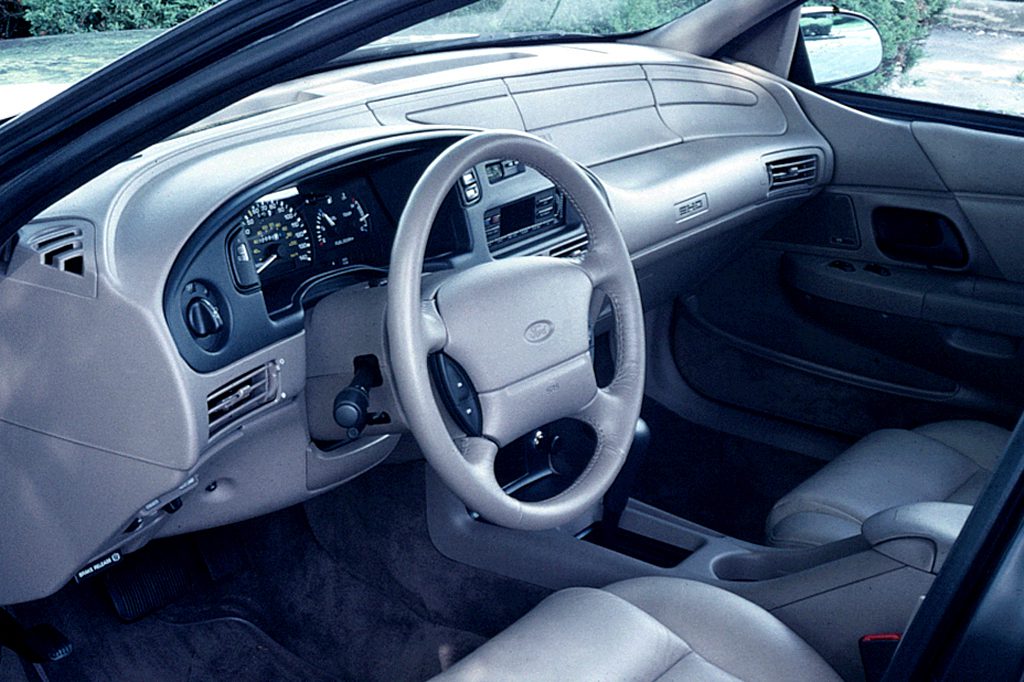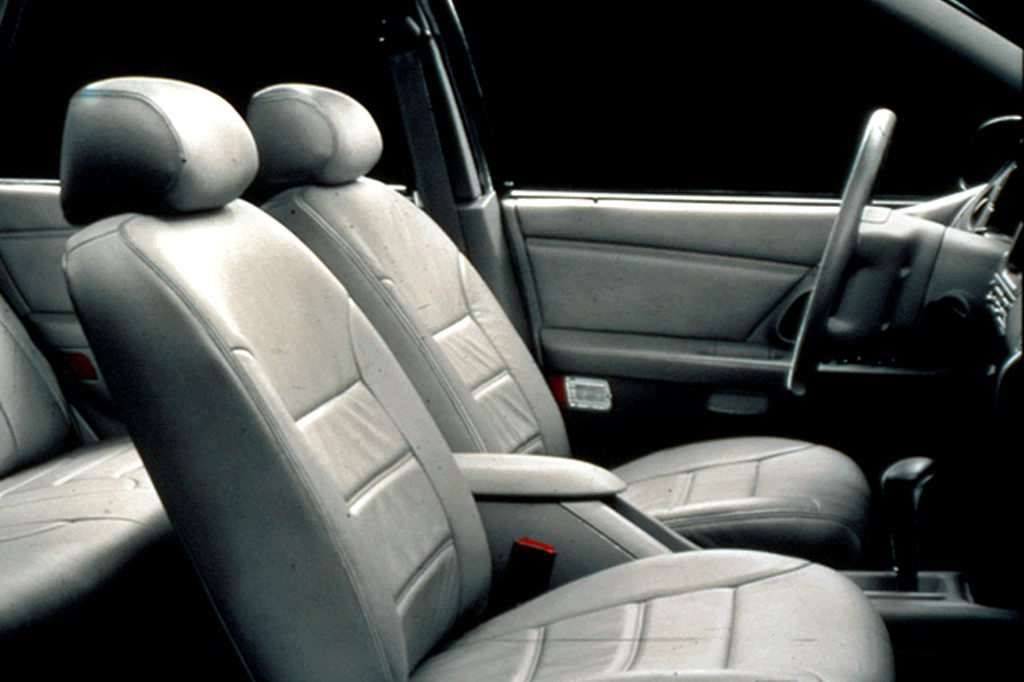| Midsize car; Built in USA |
|
|
| Good condition price range: $1,000 – $2,300* |

1995 Ford Taurus SE 4-door sedan

1993 Ford Taurus SHO 4-door sedan

1990 Ford Taurus GL 4-door wagon

1993 Ford Taurus SHO interior

1993 Ford Taurus interior
| Pros: |
|
| Cons: |
|
We rank the early ’90s Taurus/Sable among the most impressive domestic cars: solid, roomy, great to look at, and a joy to drive.
Overview
Launched to great fanfare for 1986, the Mercury Sable looks similar, but the midsize sedans shared no sheetmetal. Both mix contemporary design with a spacious interior. Starting in 1990, a driver-side airbag was standard on all Taurus models. A 4-cylinder engine continued to power the L and GL sedans, but wagons held a 3.0-liter V6. At LX level, sedans used the 3.0-liter V6, while the wagon benefited from a 3.8-liter V6.A high-performance SHO version, introduced for ’89, carries a 220-horsepower twin cam V6 that was built in Japan from a Yamaha design, plus all-disc brakes and 5-speed manual shift. No automatic transmission was available, but antilock braking was added during the SHO’s 1990 season. ABS was optional on other sedans.
Yearly Updates
| 1991 Taurus A new 4-speed automatic transmission with electronic shift control went into Tauruses (except the SHO). Four-cylinder engines gained 15 horsepower. Antilock braking was optional on wagons as well as sedans, and the SHO gained new wheels and tires. |
| 1992 Taurus Subtle restyling for 1992 mixed the familiar shape with fresh sheetmetal, powered only by V6 engines. A new dashboard had space for an optional passenger-side airbag. |
| 1993 Taurus For ’93, the sizzling SHO finally could get an automatic transmission, with a larger, torquier engine than the manual-shift version. Base L models were dropped, but the GL borrowed most of the L’s trim to become the entry-level Taurus. All models had body-color bumpers. |
| 1994 Taurus All Tauruses now had both driver- and passenger-side airbags. |
| 1995 Taurus A Sport Edition (SE) sedan joined for ’95, with aluminum wheels and sport bucket seats. An all-new Taurus was ready to bow for ’96. |
